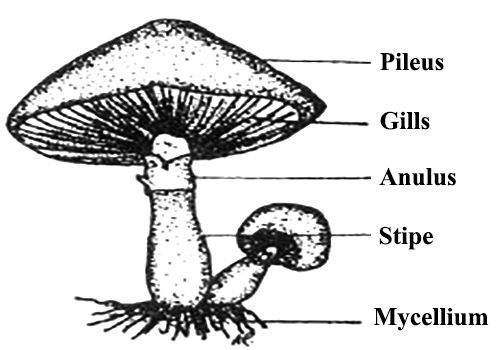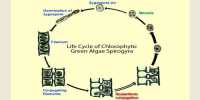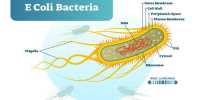Fungi (Sing: Fungus) are non-green; there are no photosynthetic pigments in their body. They depend on dead organic substances or other living bodies for their food. A short description of Agaricus- a member of fungi is stated here:
Structure: Agaricus is a well-discussed fungus.

Fig: Agaricus
The main vegetative body of Agaricus is very thin, thread-like and branched. In the vegetative cells, there are Nuclei (PI. of Nucleus), granular protoplasm, oil drops, and vacuoles. Colorless thread-like vegetative body usually lies under the soil surface and spread there. At last, they interwove to form a special organ and rise above the soil. This special organ above the soil is called the Fruit body, which also known as Basidiocarp. A mature fruit body or an umbrella-like body is known as Mushroom. It consists of an expanded umbrella-like top, called Pileus and a stalk or stem-like portion called the Stipe. Gills are arranged at the ventral surface of the Pileus from where spores are born.
Reproduction: They reproduce by the formation of Basidiospores.
Importance: Agaricus campestris is well cultivated in home and abroad. They are marketed as ‘Mushroom’ and are served as a delicious food in luxurious hotels. There are different kinds of valuable food ingredients in it. In the fields, there may have poisonous Mushroom too. So without being certain one should not eat it.













